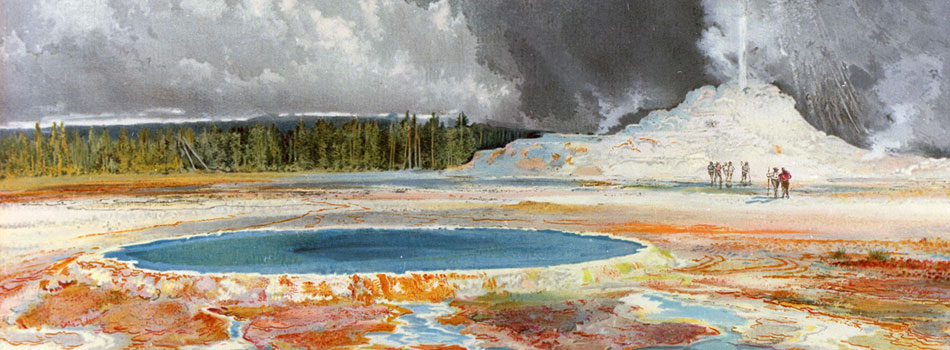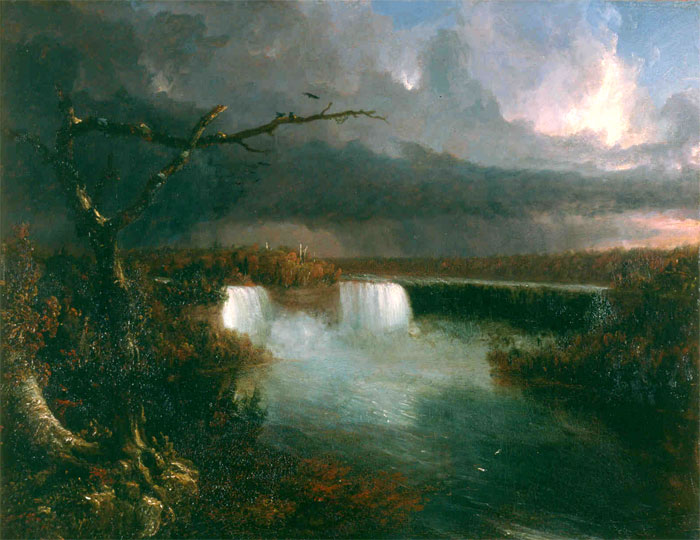Landscape Art and the Founding
of the National Park Service
" ...to conserve the scenery and the natural and historic objects and the wild life therein and to provide for the enjoyment of the same in such manner and by such means as will leave them unimpaired for the enjoyment of future generations." National Park Service Organic Act, 1916
Art – in particular, landscape art and photography – was crucial to the establishment of the National Park Service. Artist George Caitlin first conceived of the national park idea in 1832. He envisioned large-scale natural preservation for public enjoyment as he traveled to the American interior to paint portraits of Native Americans. Concerned about the destructive effects of westward expansion, Caitlin wanted “by some great protecting policy of government... a magnificent park... a nation’s park, containing man and beast, in all the wild (ness) and freshness of their nature’s beauty!”
Landscape paintings and photographs captured the grandeur and beauty of the West and captivated audiences at a time when travel was limited. These artworks created a groundswell of support to preserve the natural wonders that culminated in the establishment the National Park Service in 1916.
Romantic portrayals of nature by artists, including Thomas Cole and Frederick Edwin Church, countered earlier views of the wilderness as something to be conquered. As appreciation for what was perceived as unspoiled nature grew and as spectacular Western natural areas became known, the idea of preserving such places began to take hold. The American public first saw Yosemite Falls when a drawing, The High Fall by Thomas Ayres, was published in 1856. This, together with Carleton Watkins’ mammoth photographs of Yosemite in 1861, stimulated interest in the Yosemite Valley. Exhibited in New York, they brought the splendor of Yosemite Valley to the East for the first time. These photographs were instrumental in creating political support to preserve the majestic valley and its towering sequoia trees. In June 1864, President Abraham Lincoln signed legislation that granted those lands to California to “be held for public use, resort, and recreation . . . inalienable for all time.”
More...


